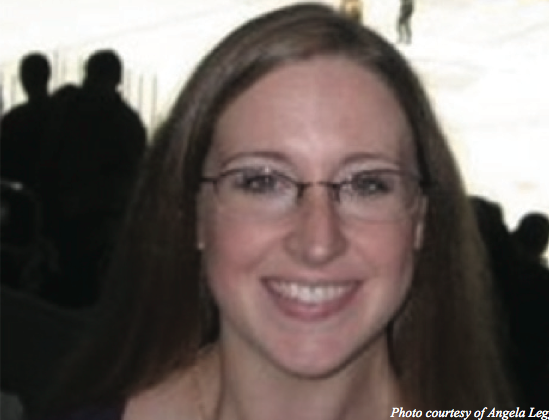Professor Angela Legg Presents Research on “Bad News Delivery”

Psychology Club and Paragon House hosted a presentation by Angela Legg, PhD, and her research in “Bad News Delivery” on Wednesday in Lienhard 20.
Legg is a new professor in the psychology department who also is in charge of the Social, Health, and Relational, Positive Psychology (SHARPP) Lab.
“Bad News Delivery” is the way in which a person plans to relay another person bad news. It is common for people to ask, “Do you want the good news or the bad news first?” The social psychology of bad news delivery deals with the way in which the “giver” of bad news presents the new information and the way in which the “receiver” of bad news responds.
People often find themselves as the bearers of bad news; whether they are doctors, teachers, boyfriends, or girlfriends. Every person has a different way of presenting information and there are many factors that affect the way news are told.
Legg’s first example was a relatable one.
“First the doctor told me the good news: The doctor was going to have a disease named after me—Steve Martin.”
“The experience of getting bad news is a bit evasive and everyone seems to think they are an expert,” Legg said. “You can search on Google and find many people giving advice for the best way to break up with someone, or the best way to fire someone, but ultimately they are only talking from personal experience.”
The order of positive to negative news differs depending on the person and their subjective situation. It is anxiety-provoking for both parties involved. The correspondent typically builds up anxiety until the point of releasing the bad news, where the receiver experiences the most anxiety upon gathering the information.
Legg described four different ways in which people choose to relay bad news.
The first is “Blended News Delivery”, which incorporates good and bad news into the conversation, assuring the receiver that there are still good things.
“The PEWTER Model” was developed by Kathleen Keefe-Cooperman, a Pace university Alumni, and is most common among counselor-client relationships. It is an acronym which stands for Preparing, Evaluating, Warning, Telling, Emotionally responding and sympathizing with the receiver, and Regrouping.
“The Mum Effect” emphasizes ways to avoid giving the bad news such as waiting for things to change or resorting to the use of indirect communication.
Lastly, “The Sandwich Model” incorporates the technique of giving some good news in the beginning of the conversation, following up with the bad news, and then wrapping everything in what would seem to be a neat bow by giving the receiver more good news, or the silver-lining of the situation.
Legg has conducted three studies through the University of California-Riverside (UCR) in which the findings explored the differences in the parties when exchanging good and bad news.
The first study, “Communication Alignment,” questioned whether one could give news in a way that alters others or change the way the giver reports the bad news. In general, the research showed that receivers wish to have the bad news first and it really depended on many circumstances for the giver.
“In my studies I typically find that 75 percent [of receivers] report that they wanted to hear bad news first,” Legg said.
The second study at UCR focused on personality traits of the receiver and the bad news was the personality traits that they were lacking. “Does Order Matter,” looked at the receiver’s responses after learning good news first and also after learning bad news first. More frequently than not, when participants of the study learned of bad news and then good news, they were less likely to remember the bad news and were not as encouraged to change. Legg explained that the participants that heard the good news last had more positive moods and “reported worrying less about the bad news.”
In study three, the form of communication was tested in which the giver had the option to either email the receiver or confront them in person to express the bad news. People that decided to email started with the good news and then told the bad news. The people that decided to speak the news in person started with the bad news and then ended with the good news to leave on a high note. The study showed that even more than the good-bad order, “they preferred bad news sandwiches when giving news in person—good news, bad news, good news.”
Teacher-student delivery of bad news is difficult and sugar coating is often counterproductive due to positions of power. Legg explained that many students misinterpret kindness as a means to debate.
“You have to get outside of your head and see from both perspectives. Being aware of the other person’s reactions and feelings is a key part in bad news delivery,” Legg said. “Because I am so invested in students, I want them to do well and in giving them bad news I don’t want the message to get lost. I use the bad news solution sandwich to tell students what the issue is and then how they can fix the problem.”
Legg plans to continue the research that she conducted while at UCR through the Pace SHARPP Lab.
Your donation supports independent, student-run journalism at Pace University. Support the Pace Chronicle to help cover publishing costs.
